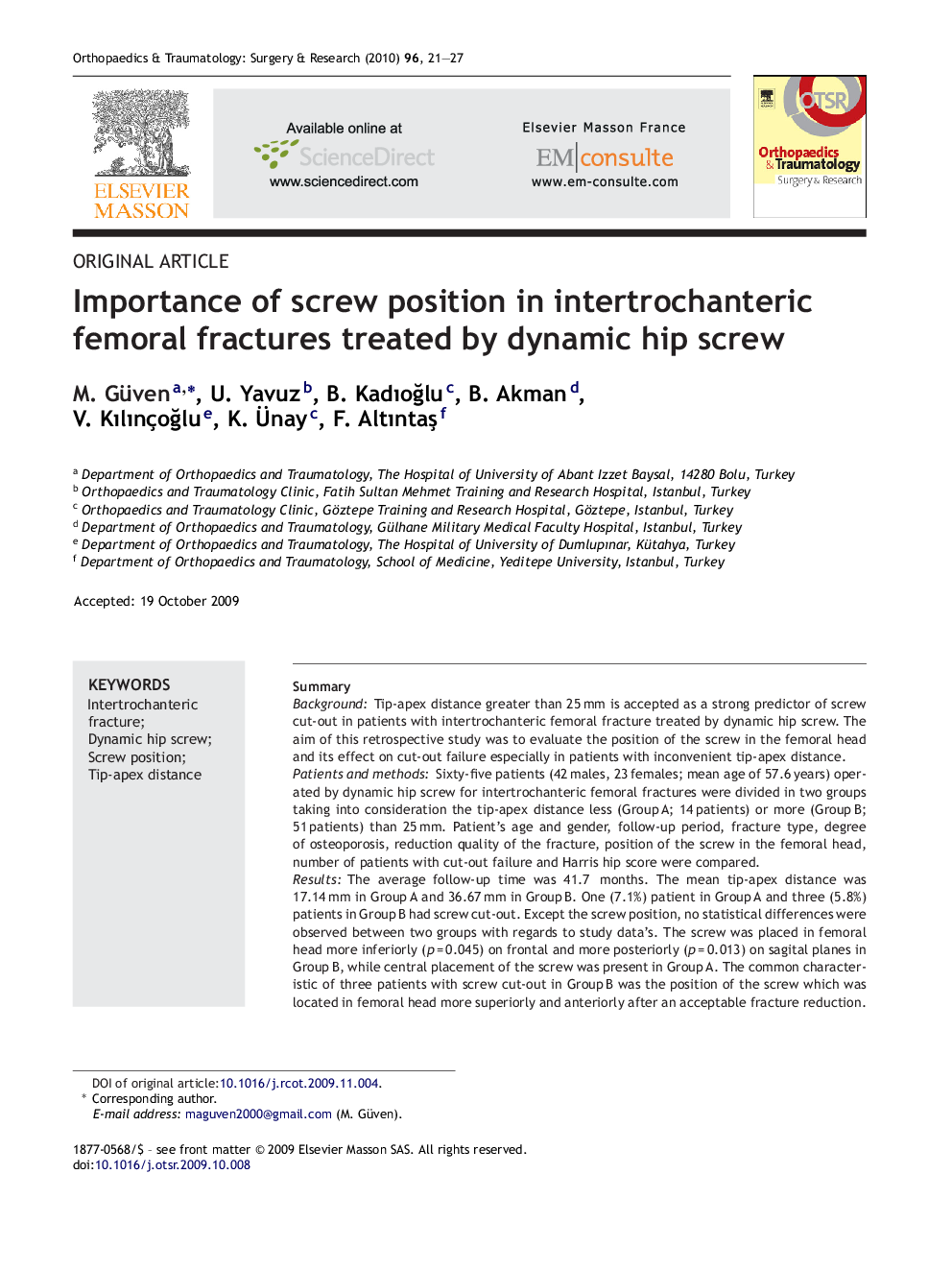| Article ID | Journal | Published Year | Pages | File Type |
|---|---|---|---|---|
| 4082408 | Orthopaedics & Traumatology: Surgery & Research | 2010 | 7 Pages |
SummaryBackgroundTip-apex distance greater than 25 mm is accepted as a strong predictor of screw cut-out in patients with intertrochanteric femoral fracture treated by dynamic hip screw. The aim of this retrospective study was to evaluate the position of the screw in the femoral head and its effect on cut-out failure especially in patients with inconvenient tip-apex distance.Patients and methodsSixty-five patients (42 males, 23 females; mean age of 57.6 years) operated by dynamic hip screw for intertrochanteric femoral fractures were divided in two groups taking into consideration the tip-apex distance less (Group A; 14 patients) or more (Group B; 51 patients) than 25 mm. Patient's age and gender, follow-up period, fracture type, degree of osteoporosis, reduction quality of the fracture, position of the screw in the femoral head, number of patients with cut-out failure and Harris hip score were compared.ResultsThe average follow-up time was 41.7 months. The mean tip-apex distance was 17.14 mm in Group A and 36.67 mm in Group B. One (7.1%) patient in Group A and three (5.8%) patients in Group B had screw cut-out. Except the screw position, no statistical differences were observed between two groups with regards to study data's. The screw was placed in femoral head more inferiorly (p = 0.045) on frontal and more posteriorly (p = 0.013) on sagital planes in Group B, while central placement of the screw was present in Group A. The common characteristic of three patients with screw cut-out in Group B was the position of the screw which was located in femoral head more superiorly and anteriorly after an acceptable fracture reduction.ConclusionsPeripheral placement of the screw in femoral head increases tip-apex distance. However, posterior and inferior locations may help to support posteromedial cortex and calcar femoral in unstable intertrochanteric fractures and reduce the risk of cut-out failure.Level of evidenceLevel IV, retrospective series.
